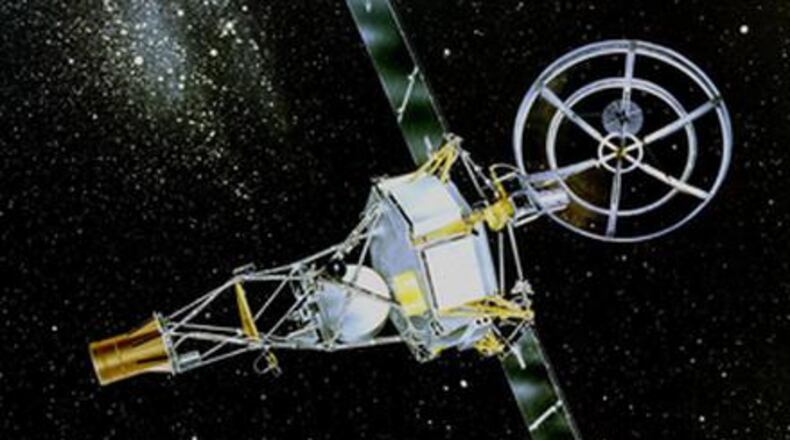It was the first interplanetary space launch by the United States in 11 years.
Magellan, the fifth U.S. trip to Venus, launched from the space shuttle on May 4, 1989, on a mission to map the surface of the solar system’s hottest planet. The spacecraft reached Earth’s cloudy sister 15 months later on Aug. 10, 1990, 30 years ago Monday.
Magellan was nearly scuttled before ever getting off the ground.
Planning for the radar-mapping mission to Venus started in the late 1970s, but it was put on the back burner for more than a decade due to a lack of funding and budget restraints.
The mission was also one of several that NASA postponed in the aftermath of the space shuttle Challenger disaster in 1986. When spaceflights resumed in 1988, Magellan butted up against the planned launch of Galileo, which was heading to Jupiter in October.
Magellan, named after Portuguese explorer Ferdinand Magellan — the first person to circumnavigate the globe — had to overcome several technical and financial hurdles before its 64 million-mile journey to peel back Venus’ thick-and-opaque atmosphere and provide the first real map of the surface of the planet.
To save costs, the Magellan spacecraft had to be built mostly with spare parts from various other missions, including an antenna left over from the historic Voyager program.
The unmanned craft weighed more than 2,000 pounds when it launched, propelled by more than 4,000 pounds of fuel.
Magellan eventually intersected with Venus on Aug. 10 and spent four years successfully mapping the surface.
Hundreds of overlapping surface images were transmitted to Earth and combined to form a complete high- resolution image of Venus’ surface.
The photographs revealed tell-tale signs of volcanic activity, including vast lava channels and plains, and plate tectonics, craters, hills, ridges and other geologic formations.
Notably, Magellan found no wind erosion like on Mars.
The craft was an important step toward understanding the geological depth of the solar system.
Magellan was deliberately crashed into the surface of Venus on Oct. 13, 1994.
About the Author
Keep Reading
The Latest
Featured


